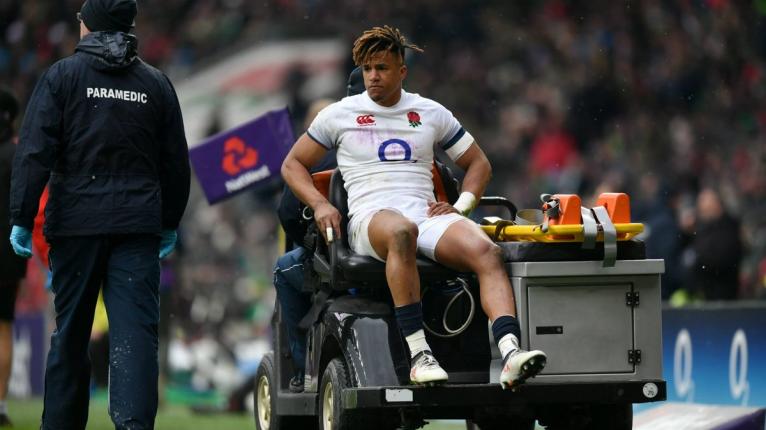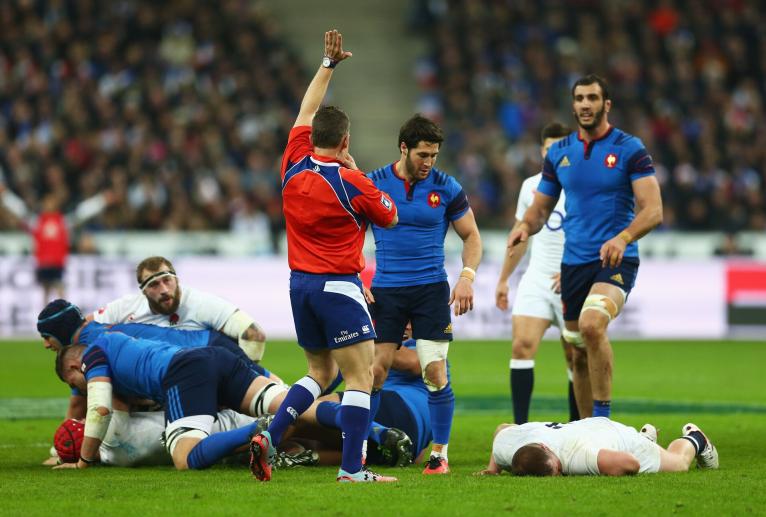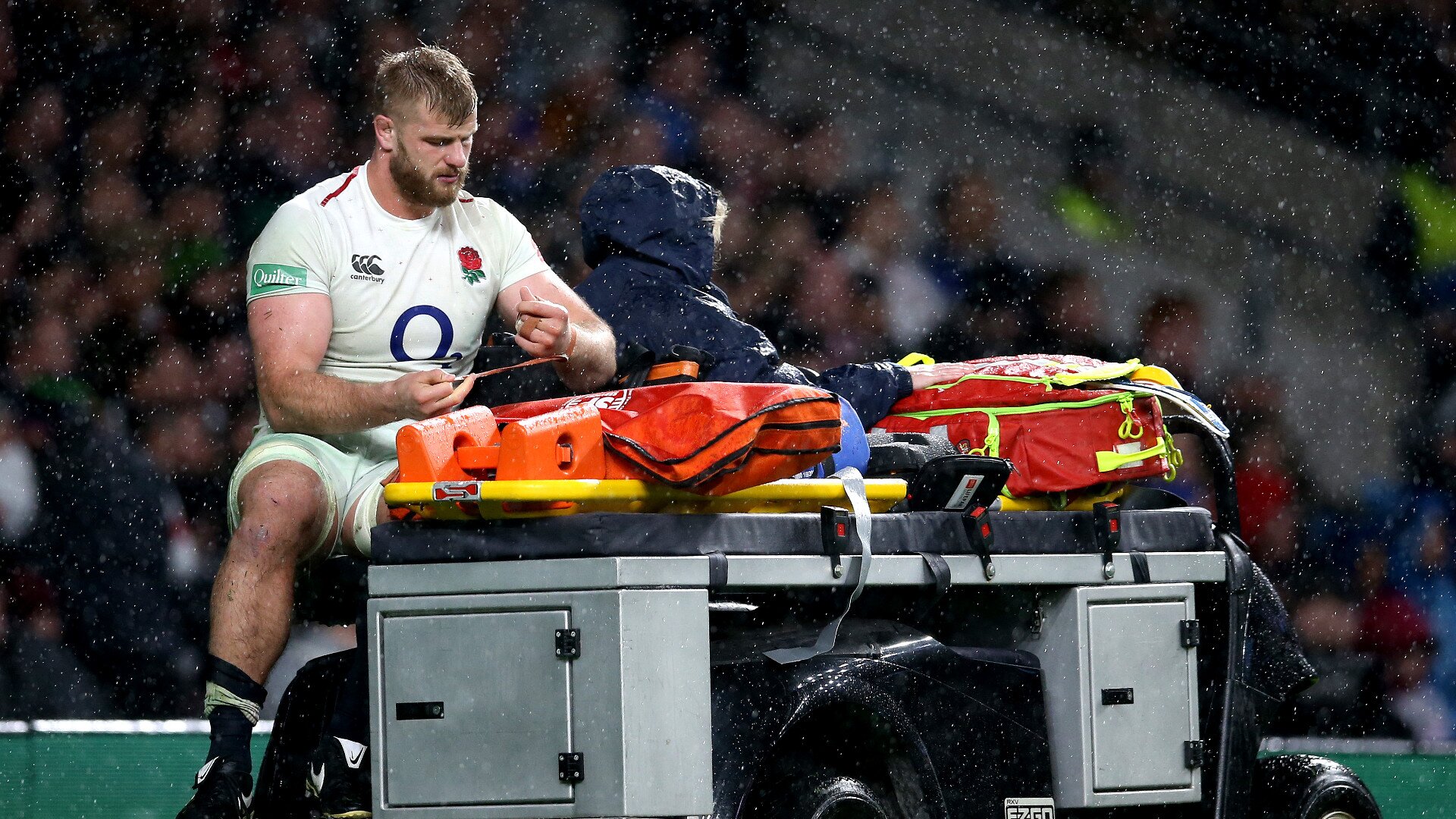Eddie Jones' damning England camp injuries statistics - report

Eddie Jones’s controversially tough England training sessions meant players were five times more likely to sustain injuries on international duty than with their clubs last season.
Concerns over the burden put on the England players were raised by club chiefs following a run of injuries with Bath owner Bruce Craig labelling a serious leg injury to prop Ben Obano with the national squad as “totally unacceptable.” Bath also saw Sam Underhill and Zach Mercer hurt with England.
The annual Professional Rugby Injury Surveillance Project (PRISP) report produced by the Rugby Football Union (RFU), Premiership Rugby (PRL) and the Rugby Players’ Association (RPA), reveals that “during the 2017-18 season, the mean incidence of England training injuries sustained during Rugby Skills was double that of the study period average. As a consequence the burden of England training injuries during Rugby Skills (579 days absence per 1000 hrs) rose to more than five times the study mean (96 days absence per 1000 hrs). The average severity of 30 days was a substantial increase on the mean of the study period as a whole (19 days).”
Nigel Melville, the acting RFU chief executive, admitted the issue was being addressed and said: “We did recognise a problem and working with coaches, clubs and strength and conditioning experts has improved the situation. We have discussed this and we have looked at the transition of players from their club environment to the England sessions which are of greater intensity. We are trying to manage them and there are positive signs.”
Away from Jones’s training sessions, Simon Kemp, RFU Medical Services Director believes the sport needs to make “ more significant changes” to protect players from serious injury as the latest report on the professional game in England reveals concussion remains a major problem.

For the seventh consecutive season, the most commonly reported match injury was concussion, accounting for 20% of all injuries in the top flight of English rugby. This comes in the wake of news that French rugby has witnessed their fourth fatality in eight months. Nathan Soyeux, a 23-year-old student, is the latest causality as he passed away in Dijon after he was admitted in the hospital showing adverse reactions following a tackle during game for engineering schools.
The French rugby federation has announced to plan a forum alongside World Rugby in March to discuss the laws of the game related to player’s heath.
Lowering the height of the tackle and taking action against players who make contact with the head is currently a major focus for the sport but any effect of changes to this area of the game will only be seen in next year’s report. The data is for last season in England’s top flight of the sport which is released today and shows that the average severity of match injuries (the time taken to return to play) for the 2017-18 season was 37 days. This is the second consecutive season the figure has risen above the expected upper limit of season-to-season variation.

Addressing the issues raised by the latest PRISP report, Kemp said: “You are three times more likely to get a yellow card for a deliberate knock on than a high tackle around the world. Concussion remains a priority for us all and we are now looking at concussion prevention with the trial of a reduced tackle height in the 2018/19 Championship Cup. It is critical that all stakeholders – medics, coaches, officials and players – work together on possible solutions.
“There is strong evidence that while the likelihood of injury in the professional game appears to be stable, the increase in injury severity that we are seeing means that the overall burden of injury is increasing. The PRISP data suggests that more significant changes to the game might be needed to reverse these trends.”
First commissioned in 2002, the PRISP report presents last season’s data and compares them with the previous 14 seasons in professional rugby to provide the baseline data needed to assess trends in injuries.
Worryingly, 2017-18 is the first season that the incidence of all injuries was greater for the tackler than the ball carrier while 38% of all injuries were sustained during training. There was a significant increase in the incidence of injuries sustained in rugby skills contact training and non-weights conditioning sessions. Concussion was the most common injury in full contact training sessions with concussion and hamstring injuries being the most common injuries in semi-contact sessions.

More investigation into the impact artificial grass pitches are having on the sport in England is planned with the report revealing that while there was no significant difference compared to natural grass: “The severity of match injuries on artificial turf is greater than that on natural grass, with an injury sustained on artificial turf lasting, on average, nine days more than one sustained on natural grass (natural grass, 30 days; artificial turf, 39 days). Consequently, the burden of injuries on artificial turf pitches is higher than those on natural grass.”
The key data includes:
Concussion
The most commonly reported match injury was concussion, contributing 20% of all match injuries.
The mean severity of medically diagnosed match concussions in 2017-18 was 19 days. This rise in mean severity, first seen last year, is largely due to a relatively small number of concussions (six) where the time to return was more than 84 days compared with previous seasons.
For the third consecutive year concussion is both the most common and highest burden match injury, followed by hamstring muscle injuries.
Compliance with the mandatory return to play protocols for concussion was again excellent, with no players returning to play in less than six days.
Tackling52% of all match injuries are associated with the tackle, with 28% of all injuries associated with tackling and 24% associated with being tackled.
2017-18 is the first season that the incidence of all injuries was greater for the tackler than the ball carrier.
Concussion accounted for 18% of all injuries to the ball carrier and 37% of all injuries to the tackler, highlighting the tackle as the key game event to consider when developing concussion and all injury reduction strategies.


































































